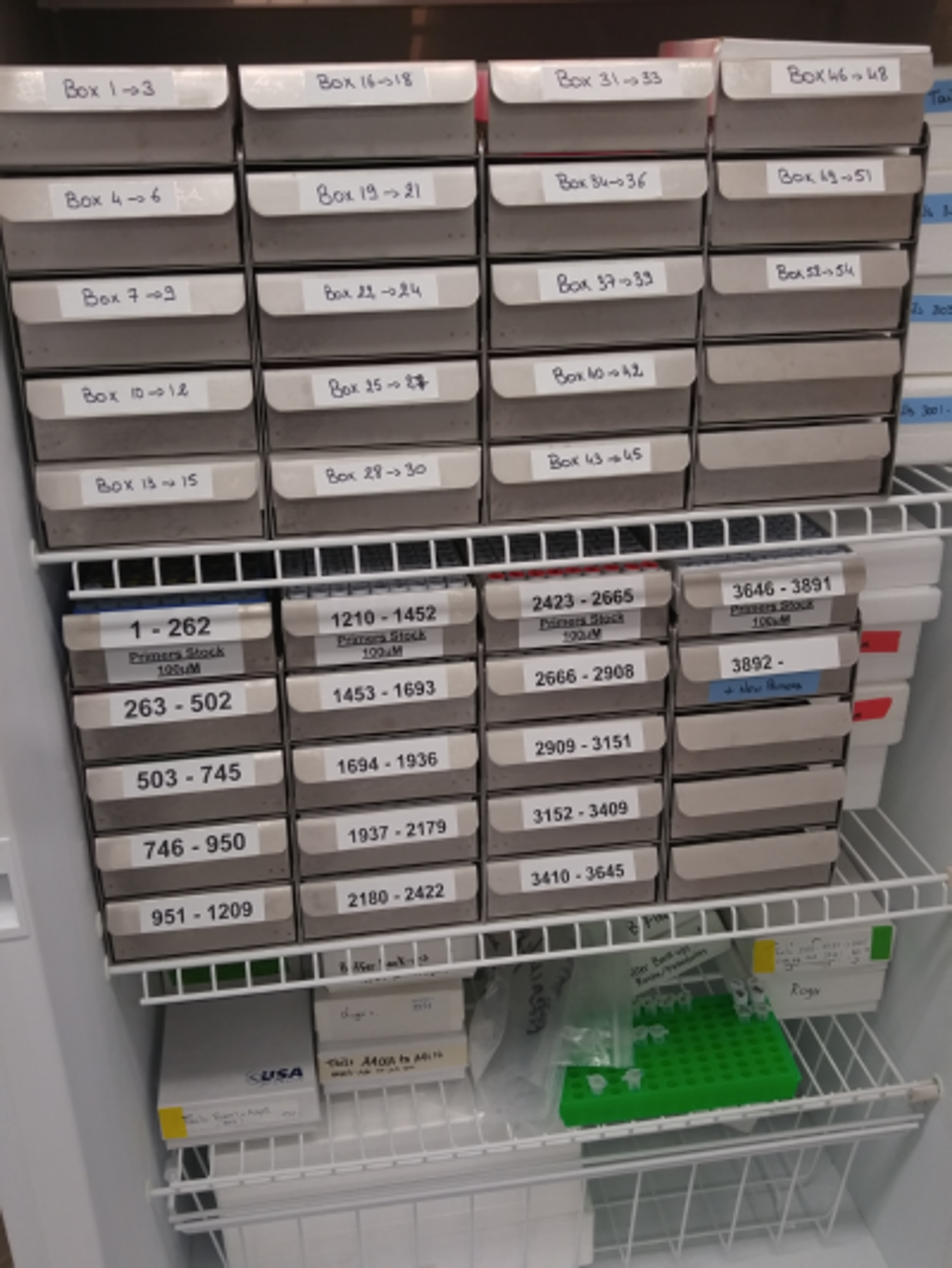The best time to organize your lab freezer is the moment you buy it, before it becomes a jumbled menagerie of assorted boxes, tubes, racks and who knows what.
But even if you find yourself playing catch-up, there are five simple steps that will help you whip your freezer into shape.
1. Determine the purpose of the laboratory freezer
What will you be storing in your lab freezer, in what volume(s) and quantity and for how long?
How many people will be sharing this freezer? It is a departmental freezer or private lab freezer?
Will the contents be stored primarily in microtubes or cryovials, larger vessels like 15 and 50mL conical tubes or unusual shaped containers like microscope slide boxes, bottles/jugs or deep well plates?
Is this a biorepository that will be accessed infrequently, or will this freezer be constantly opened and closed throughout the day?
As we will discuss shortly, there are more than two-thousand different variations of laboratory freezer racks each with their own advantages and disadvantages.
Getting clarity about this question is probably the most important component to getting the freezer done right the first time.
2. Determine the maximum capacity of your lab freezer
It’s a fact that a full freezer maintains temperature better and extends the life of your lab freezer because the compressor does not have to work as hard.
To take advantage of every square inch, make careful measurements of the interior of the freezer and note whether the shelves are movable or fixed.
Most ULT (Ultra Low Temperature) lab freezers come with adjustable shelf-rails that can be moved to accommodate a wide range of freezer racks.
It has become common to see Kenmore freezers used as inexpensive manual defrost -20C option for storing reagents and primers. Since these are designed with the home consumer in mind, capacity is more limited since at least one or two of the shelves are fixed and cannot be adjusted.
While not a hard rule, most lab freezer racks come in three different depths: 16 inches (perfect for -20C freezers), 21 inches and 26.5 inches (for 17-30 cubic foot ULT freezers).
Do the math and figure out how to pack the freezer with the most racks possible, even if you currently don’t have enough contents to fill the freezer.
When looking at freezer racks, DO NOT look at the capacity and ignore the dimensions. Two racks might say they hold eighteen boxes, but one is three boxes deep by six high and the other is six boxes deep by three high.
It is never a happy day when this happens because lab freezer racks are not returnable (we haven’t met a manufacturer yet that is willing to accept exchanges or returns).
3. Determine the best freezer rack(s) for your needs based on location, personnel and cost.
Not always in this order, but these are the three factors that make or break a good freezer rack decision.
Consider the clearance surrounding the freezer. If you cannot open the door fully this reduces capacity and means at least a few racks need to be completely removeable.
Consider the build and strength of your lab personnel. Can they retrieve a fully loaded rack without it tipping over?
Perhaps they would benefit from a sliding shelf rack or a freezer drawer rack which stay in the freezer while a single shelf at a time is removed?

What is the height of the lowest freezer shelf? How uncomfortable will it be for lab technicians to squat down, get on their knees or even lift a rack from this spot to retrieve their samples?
Cost-wise, a typical 26 cubic foot ULT freezer will run between $1800-2400 to fill up depending on which rack is selected (much more if specialty racks are needed).
4. Determine how you will label the contents of the freezer.
Not everyone can make a freezer look as stunning as this one, but it is a nice reference to show what is possible with good planning and a very good labeler.

We recommend our lab labeler which can print up to six lines of text, barcodes and has a ULT tape option for when samples need to be identified long into the future.

Will you assign each rack to a specific person or group and label with his/her/their name(s), or will you create an alpha-numeric system
5. Determine your method for inventory management.
The longer a freezer is left open, the harder the compressor must work to restore the temperature to a safe level. Making it easier for people to quickly get what they need saves the lab thousands of dollars in equipment and wasted time.
Think about how and where you log items in and out. Will there be a central lab notebook for technicians to record when a reagent was put into the freezer, when it was last used and how much was consumed?
If you purchase one of our Z-SCI TwinCore ULT freezers with WizBox monitoring, the unit comes with an integrated inventory management system. The handy touch-screen makes it quick and easy to ensure your freezer contents are fresh and accurate with no forgotten “tuna casserole” lost in the back.
Still have questions? Give us a call and speak with one of our lab storage experts and we will help you make the smart choice.


